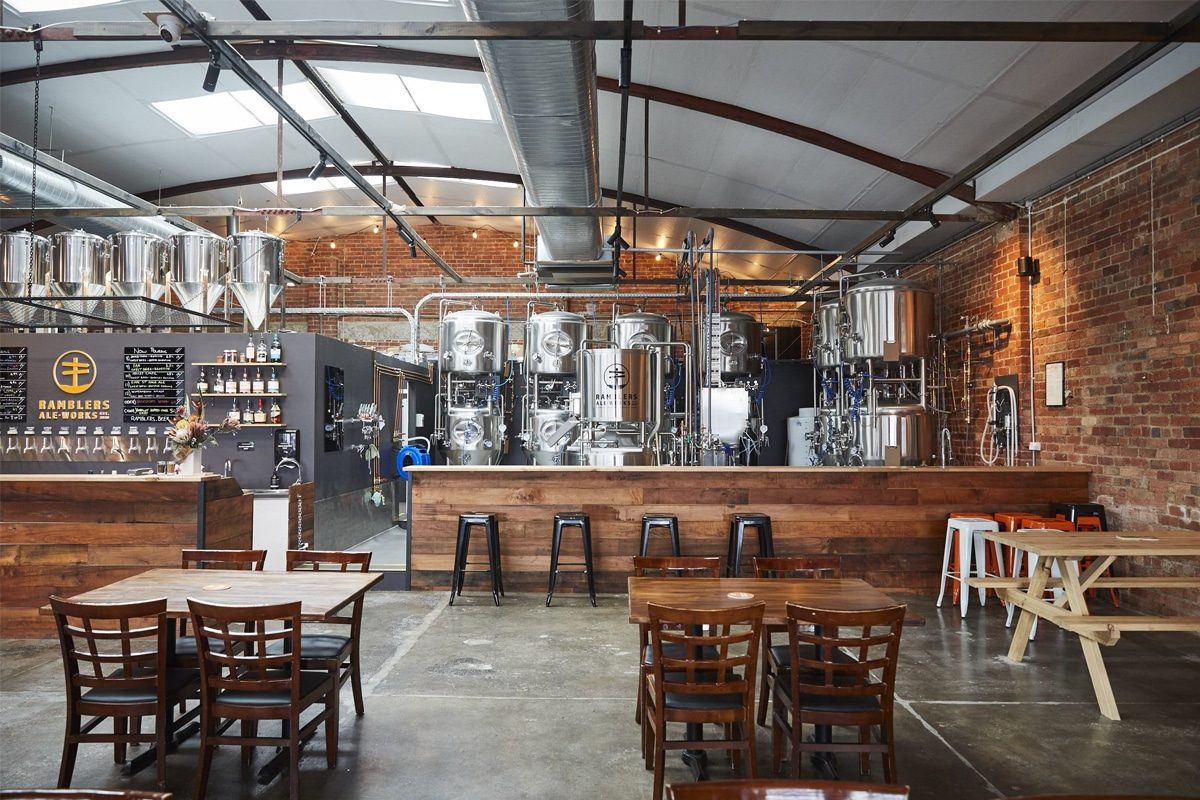
How To Choose The Brewery Location?
Choosing the right location for a brewery is a pivotal decision that can determine the success and sustainability of the business. The brewery’s location impacts production efficiency, operational costs, market reach, and brand image. It involves a complex interplay of factors such as geographic conditions, access to quality resources, market demand, and compliance with legal and environmental regulations. Additionally, the right location fosters positive community relations and supports environmental sustainability.
With the craft beer industry growing rapidly, selecting a strategic location becomes even more critical to stand out in a competitive market. This guide delves into the comprehensive process of choosing an optimal brewery location, providing insights into evaluating geographic factors, conducting market analysis, assessing resource availability, navigating legal and regulatory landscapes, and ensuring environmental and community compatibility. By understanding and addressing these multifaceted considerations, aspiring brewers can lay a strong foundation for their venture’s long-term success.
Complete Guide
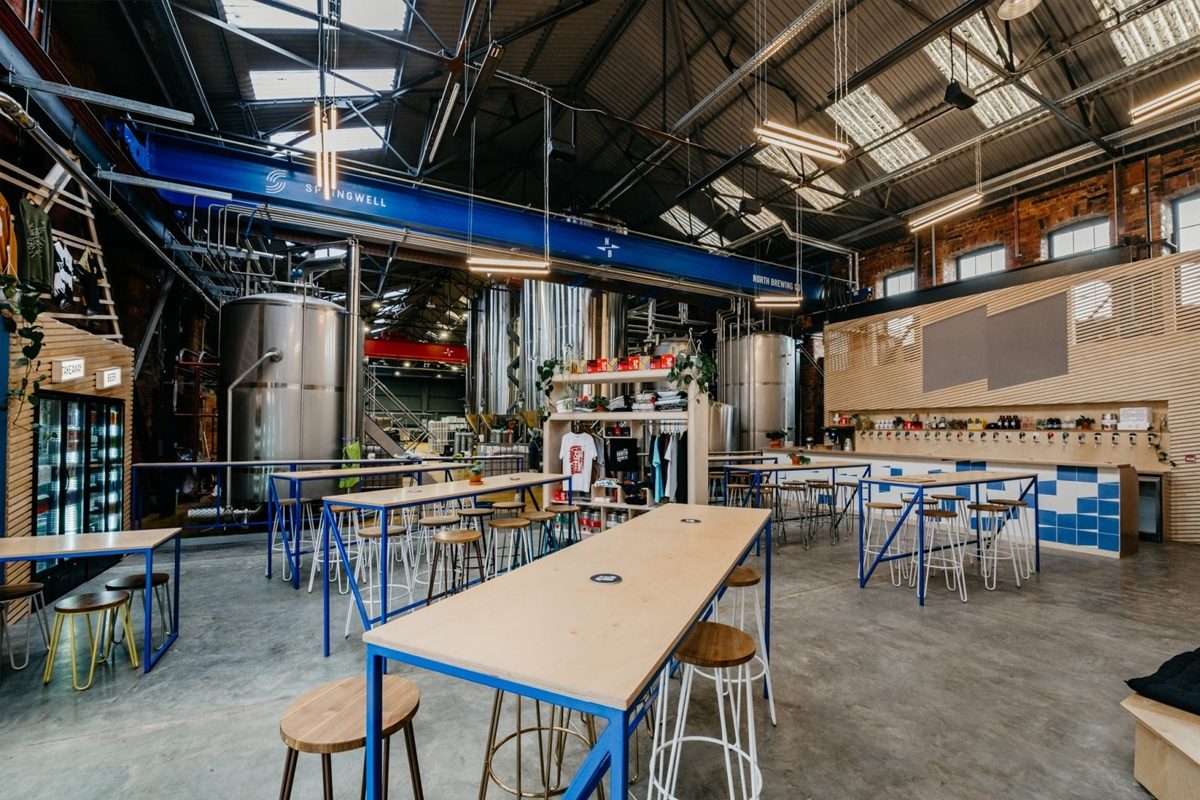
Geographic Factors
Selecting the optimal location for a brewery involves careful consideration of various geographic factors. These factors significantly influence the brewery’s operational efficiency, production costs, and overall success. Key geographic factors to consider include climate conditions, water quality, and transportation accessibility.
Climate Conditions
- Temperature and Humidity: The local climate plays a crucial role in the brewing process. Temperature and humidity levels can affect fermentation rates and the stability of stored products. For instance, warmer climates can accelerate fermentation, which may be beneficial for certain beer styles but can also necessitate more robust cooling systems to maintain consistent fermentation temperatures. Conversely, colder climates might require additional heating solutions to keep the brewing environment optimal, especially during the winter months.
- Seasonal Variations: Understanding the seasonal climate variations in a potential location is essential. Regions with extreme temperature fluctuations may require more advanced and costly climate control systems to ensure consistent production quality year-round. Additionally, areas with high humidity levels can pose challenges for grain storage, potentially leading to spoilage and increased costs for dehumidification equipment.
- Impact on Ingredients: The climate can also influence the availability and quality of local ingredients, such as hops and barley. Some regions are more conducive to growing high-quality brewing ingredients due to favorable weather conditions. Proximity to these agricultural areas can reduce ingredient costs and ensure a steady supply of fresh, high-quality raw materials.
Water Quality
- Importance of Water in Brewing: Water is a fundamental component of beer, comprising up to 90% of the final product. The quality and composition of the water used in brewing can significantly affect the taste, clarity, and overall quality of the beer. Therefore, access to a reliable and high-quality water source is paramount when choosing a brewery location.
- Mineral Content: Different styles of beer benefit from specific mineral compositions in water. For example, calcium can enhance enzyme activity during mashing and improve yeast health during fermentation, while sulfate can accentuate hop bitterness. Understanding the local water’s mineral content and how it aligns with the brewery’s intended beer styles can help in selecting the right location. In some cases, water treatment systems may be required to adjust the mineral content to achieve the desired brewing profile.
- Water Source Reliability: Consistency and reliability of the water source are critical. Breweries require large volumes of water for brewing, cleaning, and other processes. A location with a stable and abundant water supply ensures uninterrupted production and helps maintain consistent beer quality. Additionally, the cost of water and any potential restrictions on water usage should be considered, as these can impact operational expenses.
Transportation Accessibility
- Proximity to Raw Material Suppliers: Convenient transportation ensures efficient transportation of raw materials and finished products. The brewery should ideally be located near suppliers of key ingredients such as malt, hops, and yeast. Proximity to these suppliers can reduce transportation costs, minimize delays, and ensure the freshness of perishable ingredients.
- Distribution Network: The brewery’s location should facilitate easy access to distribution networks for delivering finished products to markets. Proximity to major highways, railways, and ports can streamline logistics and reduce distribution costs. Efficient transportation routes enable quicker delivery times, enhancing the brewery’s ability to meet market demand and expand its reach.
- Employee Commute: Accessibility also impacts the brewery’s workforce. A location with good transportation links can attract and retain skilled employees by reducing their commute times and improving their overall job satisfaction. Proximity to public transportation and major roadways can make it easier for employees to reach the brewery, contributing to a more stable and motivated workforce.
- Cost Implications: Transportation costs are a significant operational expense for breweries. A strategically located brewery can minimize these costs by optimizing supply chain logistics. This includes not only inbound logistics for raw materials but also outbound logistics for distributing finished products. Efficient transportation access can lead to substantial cost savings, improving the brewery’s overall profitability.
Geographic factors, including climate conditions, water quality, and transportation accessibility, play a critical role in determining the optimal location for a brewery. By carefully evaluating these factors, brewery owners can make informed decisions that enhance operational efficiency, reduce costs, and ensure consistent product quality. Understanding the interplay between these geographic considerations and their impact on brewing operations is essential for establishing a successful and sustainable brewery.
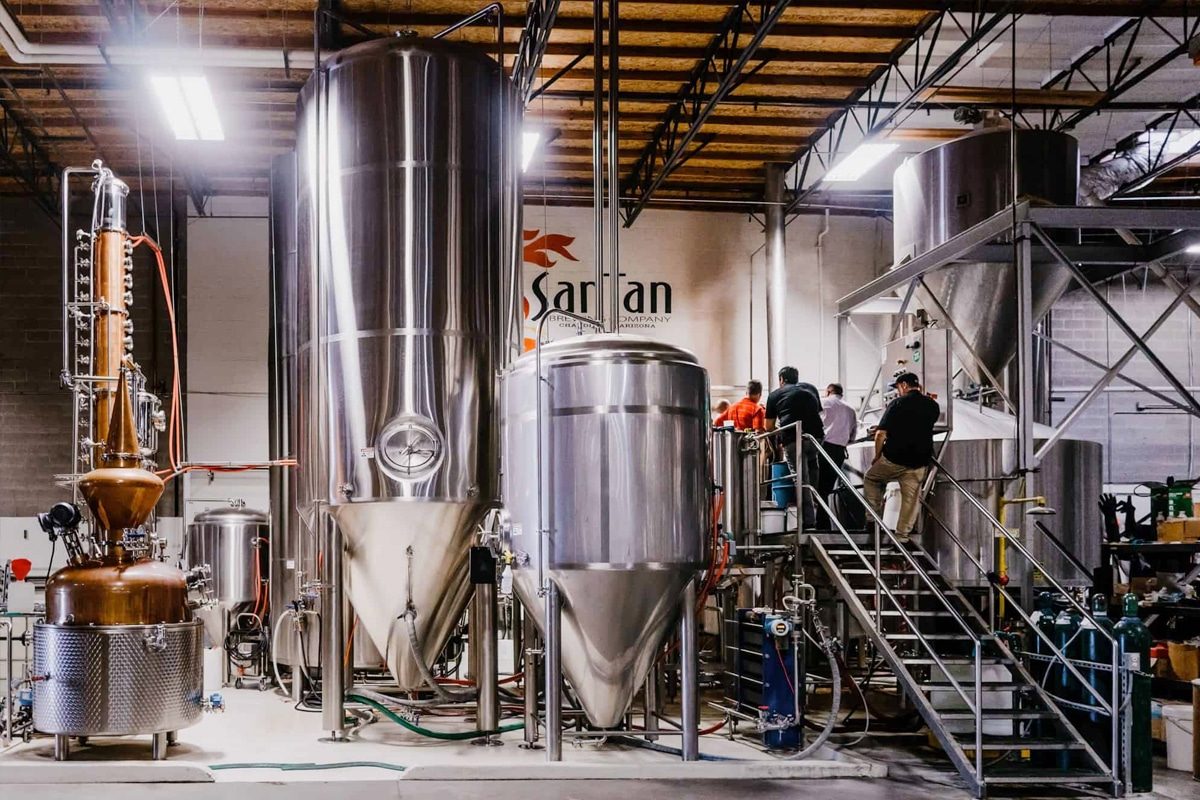
Market Analysis
When choosing a location for your brewery, a thorough market analysis needs to be conducted. This analysis helps in understanding the potential market demand, evaluating the competitive landscape, and assessing logistics costs. These factors play a significant role in ensuring the brewery’s commercial success and sustainability.
Market Demand
- Consumer Preferences: Understanding local consumer preferences is fundamental to identifying a suitable brewery location. Conducting surveys, focus groups, and market research can reveal insights into the types of beer that are popular in the area, such as craft beers, lagers, or ales. Consumer trends and preferences can vary significantly from one region to another, and aligning the brewery’s offerings with local tastes can drive higher sales.
- Demographics: Analyzing the demographics of the potential market area is essential. Factors such as age, income levels, and lifestyle can influence beer consumption patterns. For instance, younger demographics might prefer innovative and unique craft beers, while older populations might lean toward traditional beer styles. High-income areas might be more receptive to premium, higher-priced beer products.
- Consumption Patterns: Understanding beer consumption patterns in the target market helps in forecasting demand. This includes analyzing per capita beer consumption, peak drinking seasons, and popular drinking occasions. For example, regions with a strong culture of beer festivals or sporting events might exhibit higher demand during specific times of the year.
- Economic Indicators: Economic stability and growth in the potential location can impact beer sales. Regions with strong economic indicators, such as low unemployment rates and high disposable incomes, tend to have more robust consumer spending, including on discretionary items like craft beer. Conversely, areas facing economic downturns might see reduced consumer spending on non-essential goods.
Competition Analysis
- Existing Breweries: Identifying and analyzing existing breweries in a target region can provide insight into the competitive landscape. This includes assessing the number of breweries, their market share, product offerings, and pricing strategies. A high concentration of breweries might indicate a saturated market, while areas with few or no breweries might present untapped opportunities.
- Competitive Advantage: Evaluating the strengths and weaknesses of competitors can help identify gaps in the market. This involves analyzing competitors’ branding, marketing strategies, distribution channels, and customer loyalty programs. Understanding these factors can help a new brewery differentiate itself, whether through unique product offerings, superior customer service, or innovative marketing campaigns.
- Barriers to Entry: Assessing the barriers to entry in the target market is important. These barriers can include high initial investment costs, stringent regulatory requirements, and established brand loyalty among consumers. Understanding these challenges can help in devising strategies to overcome them and successfully enter the market.
- Market Positioning: Determining the optimal market positioning is key to standing out in a competitive environment. This involves deciding whether to position the brewery as a premium brand, a budget-friendly option, or a niche player catering to specific tastes or dietary preferences (e.g., gluten-free beers). Effective market positioning can attract a dedicated customer base and create a strong brand identity.
Logistics Costs
- Transportation Costs: Transportation costs are a significant factor in brewery operations. Proximity to suppliers of raw materials and key markets for finished products can reduce these costs. Analyzing transportation infrastructure, including highways, railways, and ports, helps in selecting a location that minimizes logistics expenses. Efficient transportation routes ensure timely delivery of both raw materials and finished goods, reducing delays and costs.
- Warehousing and Distribution: Assessing the availability and cost of warehousing and distribution facilities in the area is crucial. Adequate warehousing space is needed to store raw materials and finished products, especially during peak production periods. Additionally, evaluating the cost and reliability of local distribution networks, including third-party logistics providers, can impact overall operational efficiency and cost-effectiveness.
- Supply Chain Efficiency: The efficiency of the supply chain directly affects production costs and product availability. A location with a well-developed supply chain infrastructure can enhance operational efficiency. This includes reliable access to essential services such as refrigeration, packaging, and quality control. Streamlined supply chain operations can lead to cost savings and ensure consistent product quality.
- Regional Cost Variations: Logistics costs can vary significantly between regions due to factors such as fuel prices, tolls, and labor costs. Conducting a detailed cost analysis for different regions can help identify locations with the most favorable logistics costs. Additionally, considering potential future changes in logistics costs, such as fuel price fluctuations or changes in transportation regulations, can aid in long-term planning.
The comprehensive market analysis, including market demand, competition analysis, and logistics costs, can help select the ideal location for a brewery. Understanding consumer preferences, evaluating the competitive landscape, and assessing logistics costs can provide valuable insights for making informed decisions. By carefully analyzing these factors, brewery owners can choose a location that maximizes market potential, minimizes operational costs, and positions the brewery for long-term success.
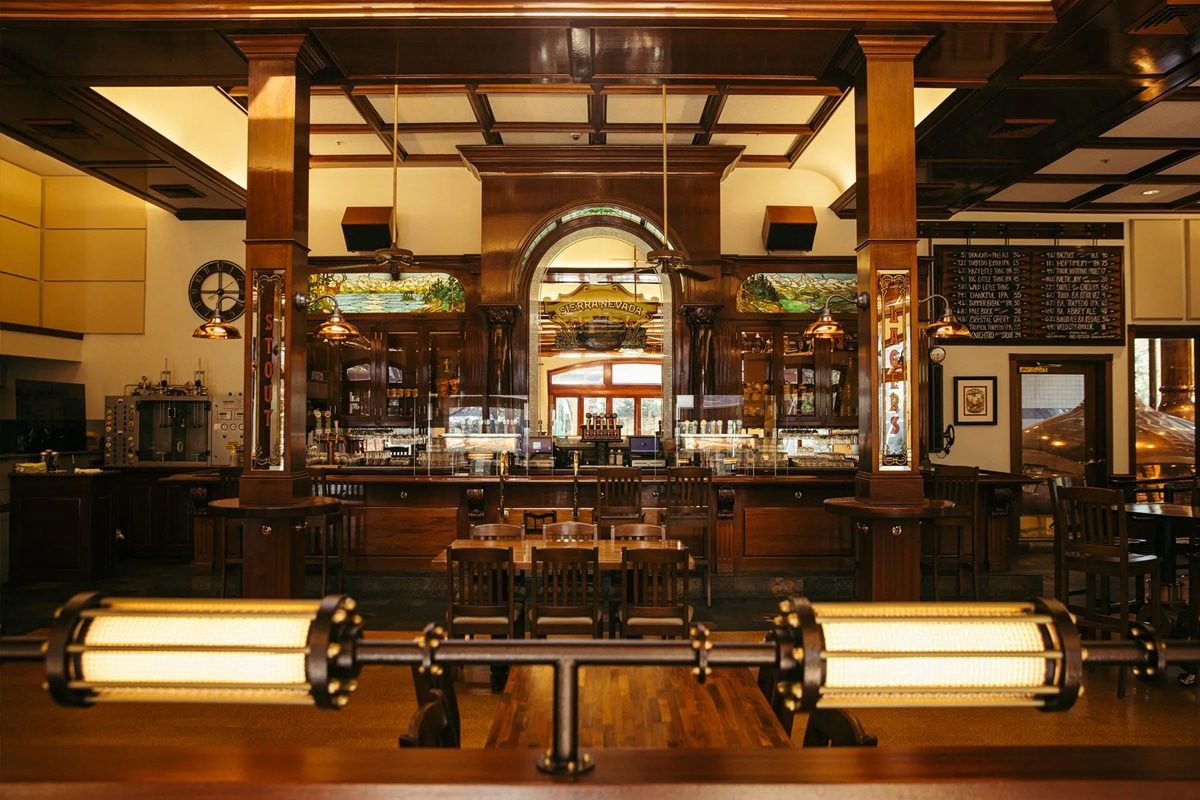
Resource Availability
Selecting the ideal location for a brewery requires careful consideration of resource availability. The availability and quality of raw materials, the accessibility to a skilled labor force, and the robustness of local infrastructure play critical roles in ensuring efficient and sustainable brewery operations. This section delves into the key aspects of resource availability, including raw material supply, labor resources, and infrastructure.
Raw Material Supply
- Proximity to Suppliers: The proximity of a brewery to suppliers of essential raw materials such as malt, hops, yeast, and water can significantly affect production costs and operational efficiency. Sourcing raw materials locally not only reduces transportation costs but also ensures freshness and timely delivery. Establishing strong relationships with local suppliers can lead to better pricing, flexible delivery schedules, and consistent quality.
- Quality and Consistency: The quality and consistency of raw materials contribute to the production of high-quality beer. Different beer styles require specific types of malt, hops, and yeast, each contributing distinct flavors and characteristics. Evaluating the quality standards of potential suppliers and ensuring they can consistently meet the brewery’s needs is essential. Additionally, having backup suppliers can mitigate risks associated with supply chain disruptions.
- Availability of Specialized Ingredients: For breweries aiming to produce unique or specialty beers, the availability of specialized ingredients such as exotic hops, fruit, spices, or adjuncts is important. Choosing a location near suppliers who can provide these specialized ingredients can enhance the brewery’s ability to innovate and diversify its product offerings. This can also facilitate collaborations with local farmers or producers, creating unique, locally-inspired beers.
- Cost Implications: The cost of raw materials can vary depending on the region and supplier. Conducting a cost-benefit analysis of sourcing materials from different locations can help in selecting a cost-effective supply chain strategy. This includes considering transportation costs, import duties, and any potential tariffs on raw materials.
Labor Resources
- Availability of Skilled Labor: The availability of skilled labor enables the successful operation of a brewery. This includes not only brewers and technicians but also quality control experts, sales and marketing professionals, and administrative staff. Regions with a history of brewing or a strong craft beer culture are likely to have a larger pool of experienced and trained workers.
- Local Educational Institutions: Proximity to educational institutions offering programs in brewing science, fermentation technology, and related fields can provide a steady stream of qualified graduates. Partnerships with these institutions can facilitate internships, apprenticeships, and training programs, ensuring a well-trained workforce. Additionally, these partnerships can foster innovation and research collaborations.
- Wage Levels and Labor Costs: Understanding the local labor market, including average wage levels and labor costs, is essential for budgeting and financial planning. Wage levels can vary significantly between regions, impacting overall operational costs. Evaluating local labor laws, regulations, and benefits requirements can also help in developing competitive compensation packages that attract and retain skilled employees.
- Employee Retention and Satisfaction: Employee retention and job satisfaction are critical for maintaining a stable and motivated workforce. Factors such as the cost of living, availability of affordable housing, quality of local schools, and overall quality of life in the area can influence employee satisfaction. Choosing a location that offers a high quality of life can improve employee retention and reduce turnover costs.
Infrastructure
- Utilities and Services: Reliable access to basic utilities like electricity, water, and natural gas can help a brewery run successfully. Assessing the capacity and reliability of these services in potential locations is crucial. Additionally, understanding the costs associated with utilities, including rates and potential for future increases, can help in long-term financial planning.
- Waste Management: Effective waste management systems are necessary for handling brewery byproducts such as spent grains, wastewater, and packaging waste. Selecting a location with access to advanced waste treatment and recycling facilities can ensure compliance with environmental regulations and reduce the environmental impact of brewery operations. Implementing on-site waste management solutions, such as anaerobic digesters or composting systems, can further enhance sustainability.
- Transportation and Logistics: Efficient transportation and logistics infrastructure supports the smooth movement of raw materials and finished products. Proximity to major transportation hubs, such as highways, railways, and ports, can reduce logistics costs and improve supply chain efficiency. Additionally, access to reliable transportation services for employees can enhance workforce accessibility and job satisfaction.
- Technology and Communication: Modern breweries rely on advanced technology and communication systems for operations, marketing, and sales. Assessing the availability of high-speed internet, reliable telecommunications, and technology support services in potential locations is important for ensuring seamless business operations. This includes considering the availability of local IT support, software solutions, and technological innovation hubs.
Resource availability, encompassing raw material supply, labor resources, and infrastructure, is a critical factor in choosing the ideal brewery location. Proximity to high-quality raw materials, access to a skilled and motivated labor force, and robust infrastructure support efficient and sustainable brewery operations. By thoroughly evaluating these aspects, brewery owners can make informed decisions that enhance operational efficiency, reduce costs, and ensure long-term success. Understanding the interactions between these resource considerations and their impact on brewing operations can help build a thriving brewery.
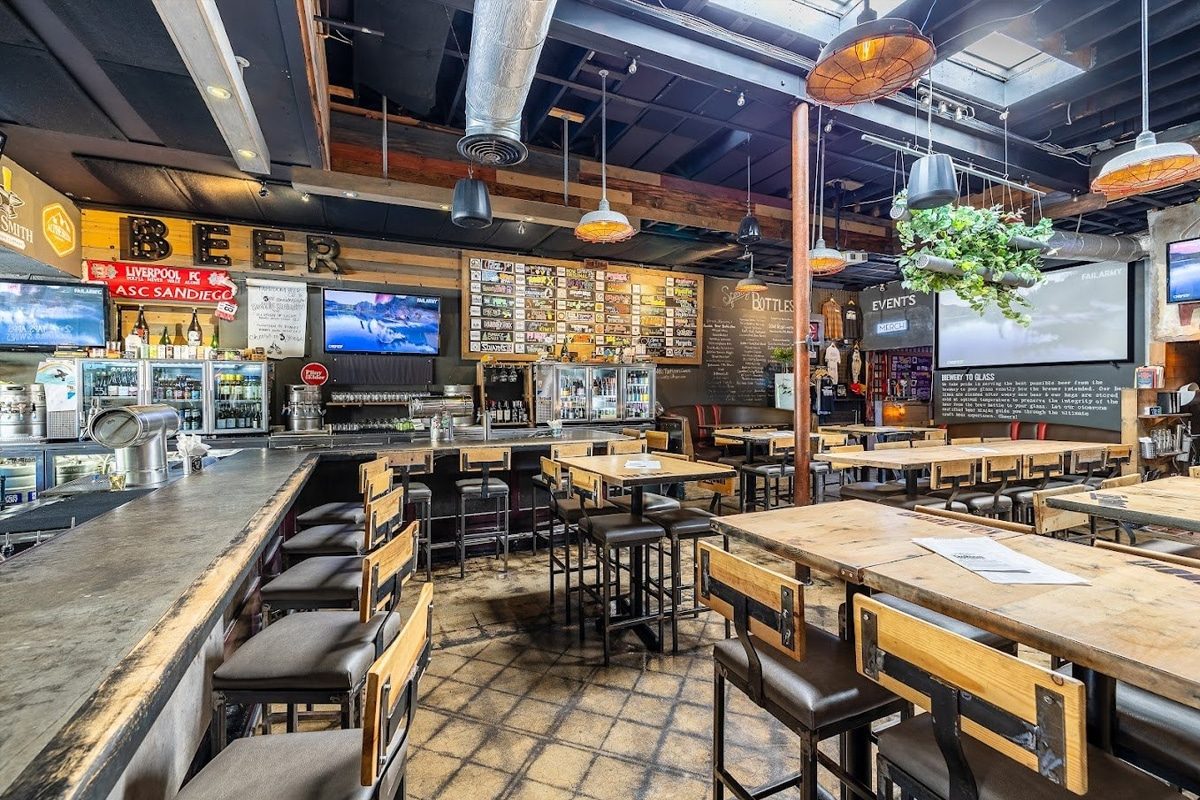
Legal Regulations
When choosing a location for your brewery, complying with laws and regulations can help ensure smooth operations and avoid potential legal issues. This section will explore critical aspects of legal regulations, including environmental regulations, construction planning, and tax policies. Understanding and adhering to these regulations can help breweries operate efficiently and sustainably.
Environmental Regulations
- Wastewater Management: Breweries generate a significant amount of wastewater during production. Environmental regulations often require breweries to treat wastewater to meet specific standards before discharging it into public sewer systems or natural bodies of water. Ensuring the selected location has access to adequate wastewater treatment facilities or implementing on-site treatment solutions is essential to comply with these regulations.
- Air Emissions: Breweries emit various pollutants, including volatile organic compounds (VOCs), carbon dioxide (CO2), and particulate matter. Local and national environmental agencies may impose limits on these emissions to protect air quality. Understanding the specific air quality regulations in the target location and investing in technologies to reduce emissions, such as CO2 capture systems or efficient ventilation, can help maintain compliance.
- Solid Waste Disposal: The disposal of solid waste, including spent grains, hops, and packaging materials, must comply with local waste management regulations. Some areas require recycling or composting programs, while others have specific disposal protocols. Selecting a location with access to appropriate waste management services or developing in-house waste reduction and recycling programs is crucial for regulatory compliance.
- Noise Control: Breweries can generate significant noise from brewery equipment operations, delivery trucks, and brewing processes. Noise pollution regulations vary by region and often require measures to minimize noise impact on surrounding communities. This can include soundproofing, scheduling deliveries during non-peak hours, and implementing noise reduction technologies.
Construction Planning
- Zoning and Land Use: Before establishing a brewery, it’s vital to ensure that the chosen location is zoned for industrial or commercial use, as required by local zoning laws. Zoning regulations dictate the types of activities permitted in specific areas and may impose restrictions on building size, height, and operational hours. Verifying zoning compliance can prevent legal disputes and delays in construction.
- Building Codes and Permits: Construction planning must adhere to local building codes and regulations, which govern aspects such as structural integrity, fire safety, electrical systems, and accessibility. Obtaining the necessary permits and approvals from local authorities before commencing construction is crucial. Working with architects and contractors experienced in local regulations can streamline this process.
- Health and Safety Standards: Breweries must comply with health and safety standards to protect employees and consumers. This includes ensuring proper ventilation, safe handling and storage of hazardous materials, and maintaining cleanliness and hygiene standards. Complying with occupational safety regulations, such as those enforced by the U.S. Occupational Safety and Health Administration (OSHA), helps prevent workplace accidents and ensure a safe work environment.
- Environmental Impact Assessments: Some regions require environmental impact assessments (EIAs) before approving construction projects. EIAs evaluate the potential environmental effects of the brewery and outline measures to mitigate negative impacts. Conducting an EIA can identify potential issues early in the planning process, allowing for adjustments to minimize environmental harm and ensure regulatory compliance.
Tax Policies
- Corporate Taxes: Understanding the corporate tax rates in the potential location is crucial for financial planning. Different regions may have varying tax rates on business income, which can significantly impact the brewery’s profitability. Researching tax incentives or credits available for new businesses or those investing in specific areas can also provide financial benefits.
- Excise Taxes: Excise taxes on alcohol production and sales are a significant consideration for breweries. These taxes are often levied on a per-unit basis, depending on the volume of alcohol produced. Different jurisdictions may have varying excise tax rates and regulations. Understanding these rates and incorporating them into the brewery’s pricing strategy is essential for maintaining profitability.
- Property Taxes: Property taxes on the brewery’s land and buildings are another important financial consideration. These taxes vary widely by location and can influence the overall cost of operating the brewery. Researching property tax rates and any available abatements or exemptions can help reduce the financial burden.
- Sales and Use Taxes: Sales and use taxes apply to the sale of goods, including beer, and the purchase of equipment and supplies. Understanding the applicable sales tax rates and regulations in the chosen location can help in pricing products appropriately and managing expenses. Additionally, some regions offer exemptions or reductions for certain types of equipment or raw materials used in production.
Navigating the complex landscape of legal regulations, including environmental regulations, construction planning, and tax policies, is critical when selecting a brewery location. Ensuring compliance with environmental standards protects the local ecosystem and community health. Adhering to construction and zoning regulations prevents legal disputes and ensures the safety and functionality of the brewery. Understanding tax policies aids in financial planning and optimizing operational costs. By thoroughly evaluating and addressing these legal considerations, brewery owners can establish a solid foundation for successful and sustainable operations.
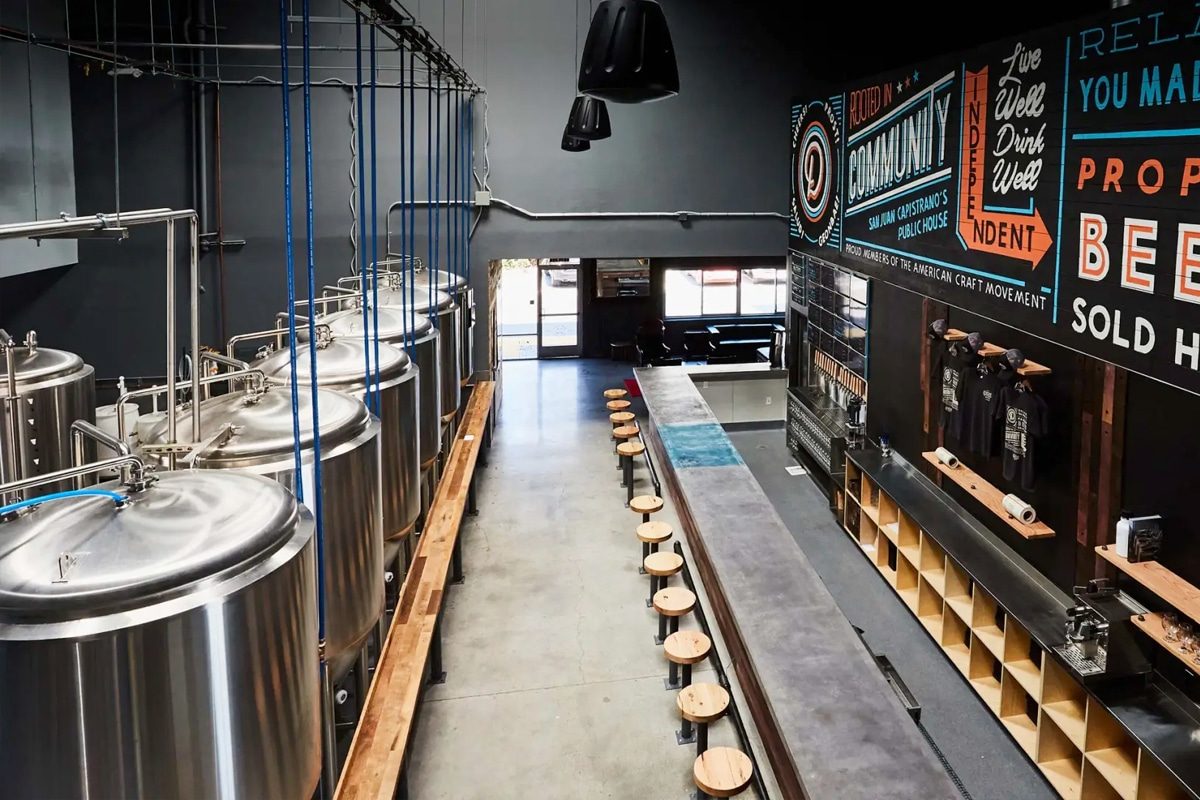
Community Impact
Choosing the right location for a brewery involves more than just logistical and economic considerations; it also requires a careful assessment of the potential impact on the local community. A brewery can become a valued part of the community, fostering positive relationships and contributing to local development. Key aspects to consider in this regard include community relations and access to public facilities.
Community Relations
- Building Goodwill: Building and maintaining positive relationships with the local community contributes to the long-term success of a brewery. This starts with open communication and transparency about the brewery’s intentions and operations. Hosting community meetings, open houses, and brewery tours can help introduce the brewery to residents and address any concerns they may have.
- Community Engagement: Actively engaging with the community can foster goodwill and create loyal customers. This can be achieved through sponsoring local events, participating in community festivals, and supporting local charities. By becoming involved in community activities, the brewery can build a positive reputation and strengthen its ties with residents.
- Economic Contributions: The brewery can significantly contribute to the local economy by creating jobs and supporting local businesses. Hiring local employees, sourcing ingredients from local suppliers, and partnering with local service providers can boost the economic impact. Highlighting these contributions can enhance the brewery’s standing in the community and create a sense of shared success.
- Addressing Concerns: Proactively addressing potential community concerns, such as noise, traffic, and environmental impact, is essential. Implementing measures to minimize noise pollution, scheduling deliveries during non-peak hours, and ensuring proper waste management can mitigate negative impacts. Regularly soliciting feedback from the community and being responsive to their concerns can help maintain a positive relationship.
- Creating Social Spaces: Many modern breweries serve as social hubs where community members gather. Designing the brewery with inviting public spaces, such as tasting rooms, beer gardens, and event spaces, can enhance its role as a community gathering spot. Offering community-oriented events, such as trivia nights, live music, and craft workshops, can further integrate the brewery into the social fabric of the area.
Public Facilities
- Accessibility: The location of the brewery should be easily accessible to both employees and customers. Proximity to public transportation, major roadways, and pedestrian-friendly areas can enhance accessibility. Ensuring adequate parking facilities and bike racks can also make the brewery more convenient for visitors.
- Healthcare Facilities: Access to medical facilities helps ensure the health of employees. Choosing a location near hospitals, clinics, and emergency services can provide peace of mind and contribute to a safe working environment. Additionally, promoting health and safety within the brewery, such as providing first aid training and wellness programs, can further support employee health.
- Educational Institutions: Proximity to educational institutions, such as universities and technical schools, can benefit the brewery in several ways. These institutions can be sources of skilled labor, research partnerships, and innovation. Collaborating with local schools on internships, apprenticeships, and educational programs can create a pipeline of talented employees and foster a culture of learning and development.
- Recreational Facilities: Access to recreational facilities, such as parks, sports complexes, and cultural centers, can enhance the quality of life for employees and attract customers. Employees who have opportunities for recreation and relaxation are likely to be more satisfied and productive. Additionally, being located near recreational facilities can attract visitors who are looking for leisure activities, potentially increasing brewery traffic.
- Local Amenities: The availability of local amenities, such as restaurants, cafes, shops, and entertainment venues, can make the area more attractive to both employees and customers. A vibrant local scene can enhance the overall experience for brewery visitors, encouraging them to spend more time and money in the area. Supporting and collaborating with neighboring businesses can create a thriving local economy that benefits everyone.
Considering the community impact is a vital aspect of choosing a brewery location. Building strong community relations through engagement, economic contributions, and addressing concerns can create a supportive and loyal customer base. Ensuring access to public facilities such as transportation, healthcare, education, and recreation enhances the quality of life for employees and attracts visitors. By thoughtfully evaluating these factors, brewery owners can establish a positive presence in the community, contributing to both their business success and the well-being of the local area.
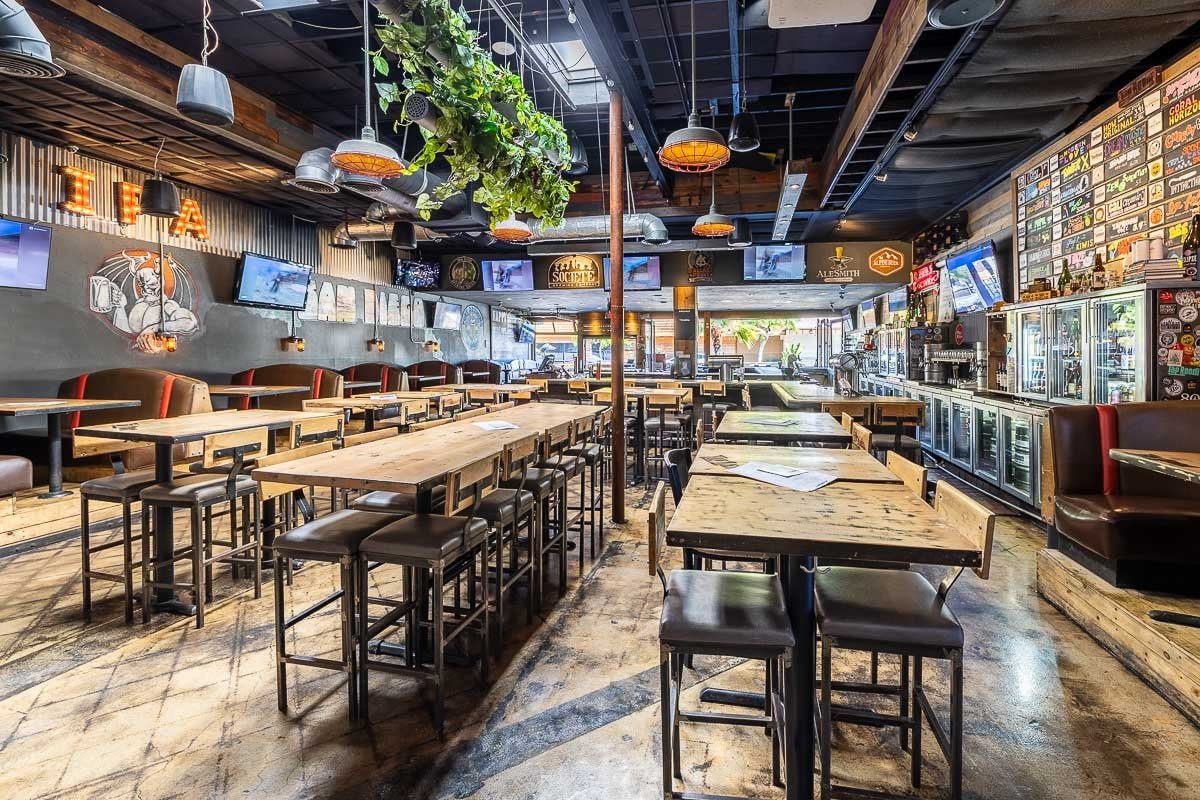
Environmental Sustainability
Choosing a brewery location with environmental sustainability in mind is not only beneficial for the planet but can also enhance the brewery’s reputation and operational efficiency. This section will cover the key aspects of environmental sustainability, including resource conservation, waste management, and environmental certification.
Resource Conservation
- Energy Efficiency: Implementing energy-saving practices can minimize a brewery’s impact on the environment. When choosing a location, consider the availability of renewable energy sources such as solar, wind, or hydroelectric power. Investing in energy-efficient equipment, such as high-efficiency boilers, chillers, and lighting systems, can significantly reduce energy consumption. Additionally, consider the building’s design and insulation to minimize heating and cooling requirements.
- Water Conservation: Water is a vital resource in brewing, used extensively in the brewing process and for cleaning purposes. Choosing a location with access to a reliable and abundant water supply is essential. Implementing water-saving technologies, such as efficient cleaning systems, closed-loop cooling, and rainwater harvesting, can reduce water usage. Recycling and reusing water within the brewery can further conserve this precious resource.
- Sustainable Sourcing: Selecting raw materials from sustainable sources can greatly reduce the brewery’s environmental footprint. Partnering with local farmers who use organic and sustainable farming practices can ensure a steady supply of high-quality ingredients while supporting local agriculture. Additionally, consider sourcing materials that are certified as sustainable, such as Fair Trade hops or organic barley.
Waste Management
- Waste Reduction: Minimizing waste generation is a key component of sustainable brewing. Implementing strategies to reduce waste at the source, such as optimizing production processes and improving inventory management, can significantly lower the amount of waste produced. Educating employees about waste reduction practices and encouraging a culture of sustainability can further support these efforts.
- Recycling and Reuse: Recycling and reusing materials contribute to effective waste management. Establishing a comprehensive recycling program within the brewery can ensure that materials like glass, aluminum, cardboard, and plastic are properly recycled. Additionally, finding ways to reuse byproducts, such as repurposing spent grains as animal feed or compost, can minimize waste and provide additional revenue streams.
- Wastewater Treatment: Breweries produce significant amounts of wastewater that must be treated before disposal to prevent environmental contamination. Implementing on-site wastewater treatment systems, such as anaerobic digesters or membrane bioreactors, can treat wastewater effectively. Treated wastewater can be reused for non-potable purposes, such as irrigation or cleaning, reducing the overall water consumption and environmental impact.
- Organic Waste Management: Managing organic waste, such as spent grain and hops, reduces landfill use and greenhouse gas emissions. Composting organic waste on-site or partnering with local composting facilities can convert waste into valuable soil amendments. Additionally, exploring options for anaerobic digestion of organic waste can produce biogas, a renewable energy source, further enhancing sustainability.
Environmental Certification
- Benefits of Certification: Obtaining environmental certifications can demonstrate a brewery’s commitment to sustainability and provide a competitive edge. Certifications such as ISO 14001 for environmental management systems, LEED for green building standards, or B Corp for overall social and environmental performance can enhance the brewery’s reputation and attract environmentally conscious consumers.
- Certification Process: The process of obtaining environmental certification typically involves several steps, including an initial assessment, implementation of sustainable practices, and verification by an independent auditor. Choosing a location that supports compliance with certification standards can facilitate this process. This may include access to certified raw materials, local regulations that align with certification requirements, and availability of technical implementation support.
- Continuous Improvement: Maintaining environmental certifications requires an ongoing commitment to sustainability. Regularly reviewing and improving environmental practices ensures continuous compliance and enhances the brewery’s sustainability performance. Engaging employees in sustainability initiatives and setting measurable goals can drive continuous improvement and foster a culture of environmental responsibility.
Environmental sustainability is a critical consideration when choosing a brewery location. By focusing on resource conservation, implementing effective waste management strategies, and pursuing environmental certifications, breweries can minimize their environmental impact and enhance their operational efficiency. These efforts not only contribute to a healthier planet but also build a positive brand image and attract a growing segment of environmentally conscious consumers. By integrating sustainability into their core operations, breweries can achieve long-term success and make a meaningful contribution to environmental preservation.
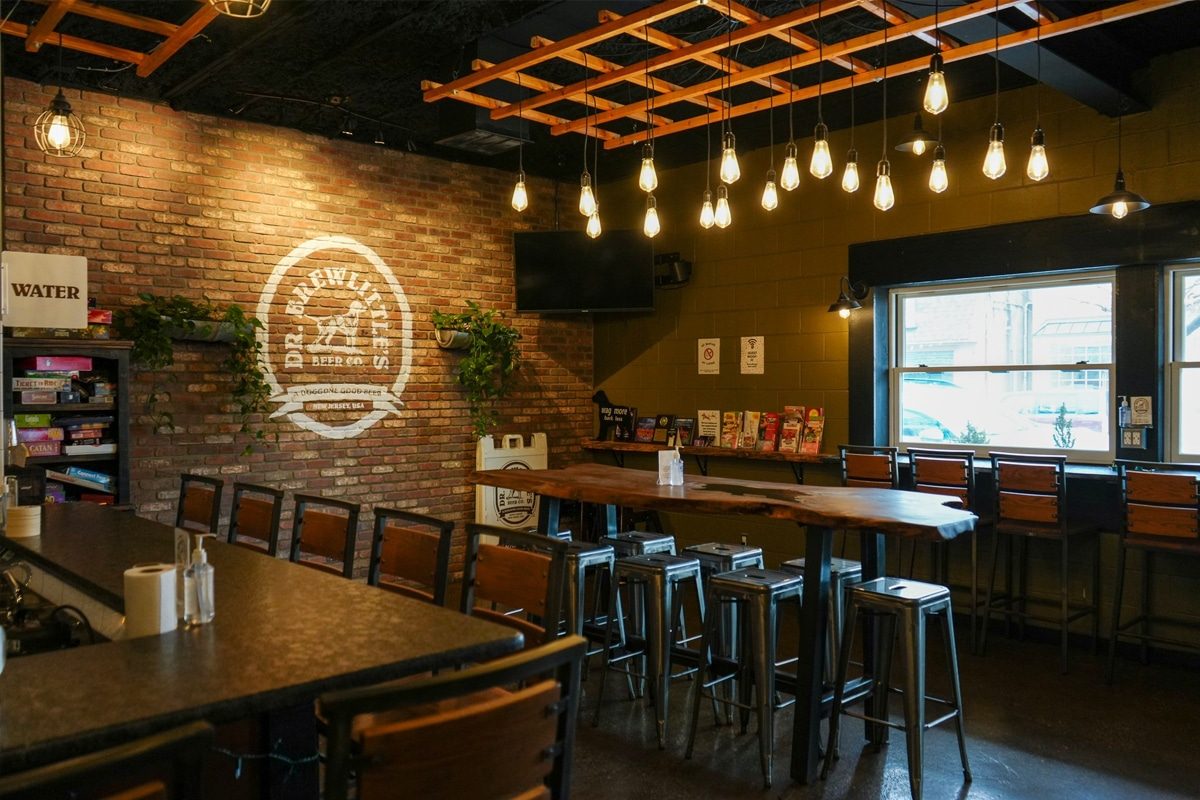
Summarize
Choosing the ideal location for a brewery involves a comprehensive analysis of various factors to ensure the business’s success and sustainability. Key considerations include geographic factors such as climate conditions, water quality, and transportation accessibility, which affect operational efficiency and costs. Market analysis is crucial for understanding local demand, competition, and logistics costs. Resource availability, including access to raw materials, skilled labor, and robust infrastructure, supports efficient operations. Compliance with legal regulations, encompassing environmental laws, construction planning, and tax policies, prevents legal complications and optimizes financial planning. Community impact, focusing on fostering positive relations and access to public facilities, enhances the brewery’s integration and reputation within the local area. Lastly, environmental sustainability through resource conservation, waste management, and obtaining environmental certifications ensures long-term operational viability and attracts environmentally conscious consumers. By carefully evaluating these aspects, brewery owners can make informed decisions that pave the way for a thriving and sustainable business.
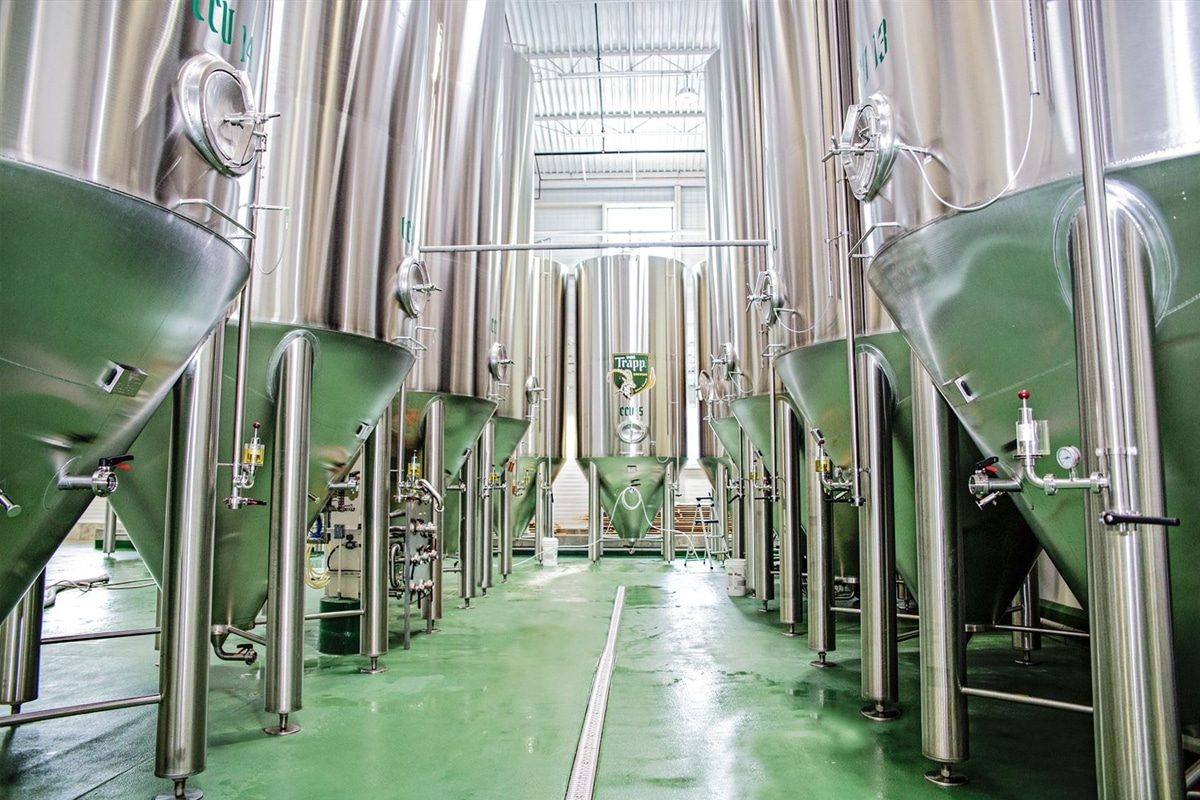
Get A Turnkey Brewery Solutions
Selecting the right location for your brewery can be a daunting task, but partnering with a professional brewery solution provider like ZYB Craft can simplify the process. ZYB Craft offers comprehensive turnkey brewery solutions, ensuring a seamless setup from start to finish. Their services include providing complete brewery equipment, such as brewhouse equipment, fermentation tanks, bright tanks, and plate heat exchangers, all tailored to meet your specific needs.
ZYB Craft’s expert team conducts detailed assessments of potential locations, considering factors like geographic conditions, market demand, and resource availability to ensure optimal site selection. They also guide you through the complexities of environmental regulations, construction planning, and community engagement, ensuring compliance and fostering positive local relationships.
With ZYB Craft’s turnkey solutions, you receive not only top-of-the-line equipment but also expert advice and support throughout the entire process. This allows you to focus on brewing exceptional beer while they handle the technical and logistical aspects of establishing a state-of-the-art brewery facility, positioning your brewery for long-term success.



